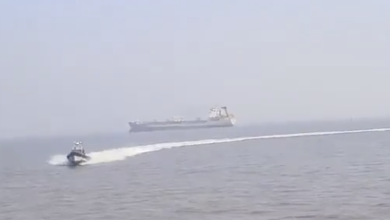 The Kashmir conflict is one of the world’s longest conflict, rooted in historical, political, and strategic intricacies. It has resulted in untold suffering for millions of Kashmiris, who have been denied their right to self-determination for over seven decades. The conflict can be divided into three distinct phases: from 1947 to 1989, 1989 to 2019, and from 2019 to the present day. Each phase is marked by key events, including massacres, human rights violations, and the denial of United Nations Security Council (UNSC) resolutions that promised a plebiscite for the people of Kashmir. These phases also highlight India’s gradual consolidation of power over Kashmir and the suppression of the Kashmiri people’s political autonomy and fundamental rights.
The Kashmir conflict is one of the world’s longest conflict, rooted in historical, political, and strategic intricacies. It has resulted in untold suffering for millions of Kashmiris, who have been denied their right to self-determination for over seven decades. The conflict can be divided into three distinct phases: from 1947 to 1989, 1989 to 2019, and from 2019 to the present day. Each phase is marked by key events, including massacres, human rights violations, and the denial of United Nations Security Council (UNSC) resolutions that promised a plebiscite for the people of Kashmir. These phases also highlight India’s gradual consolidation of power over Kashmir and the suppression of the Kashmiri people’s political autonomy and fundamental rights.
From 1947 to 1989, the people of Kashmir patiently waited for the referendum promised under the UNSC resolution. In October 1947, Indian occupation forces landed in Srinagar, sealing the fate of the princely state. This event triggered decades of conflict and resistance, symbolizing the denial of the Kashmiri people’s right to self-determination. The day stands as a painful reminder of human rights abuses, political betrayals, and the ongoing struggle for independence that continues to define the lives of Kashmiris.
In the chaotic aftermath of British India’s partition, the princely states, including Jammu and Kashmir, were given the choice to accede to either India or Pakistan. Maharaja Hari Singh, the Hindu ruler of the Muslim-majority state of Jammu and Kashmir, in exchange for military assistance from India, signed the so-called Instrument of Accession on October 26, 1947, ceding control of Kashmir’s defense, foreign affairs, and communications to India. The Maharaja’s decision was made under duress and without consulting the Kashmiri people, who had no say in the matter. India promised that the future of Kashmir would be decided through a plebiscite, where Kashmiris could choose whether to join India or Pakistan. However, that promise was never fulfilled, and Kashmiris were denied their fundamental right to self-determination.
India, in its bid to legitimize its military intervention, took the Kashmir issue to the United Nations in 1948. The United Nations Security Council (UNSC) passed several resolutions, the most notable being Resolution 47, which called for a ceasefire, the withdrawal of troops from both India and Pakistan, and a plebiscite to determine the future of Kashmir. This plebiscite was meant to give Kashmiris the right to choose between India and Pakistan.
Despite the UNSC resolutions, India has never conducted the promised plebiscite. Over time, India consolidated its control over Jammu and Kashmir, and the political rights of Kashmiris were systematically eroded. Article 370 of the Indian Constitution, which granted special autonomy to Jammu and Kashmir, was used as a temporary measure, but India gradually diminished this autonomy over the years. The failure to implement UN resolutions laid the foundation for decades of political unrest, armed resistance, and brutal military repression in Kashmir.
The denial of Kashmiris’ right to self-determination, which began with the events of October 27, 1947, has led to decades of brutal repression and numerous massacres. In October 1947, soon after India took control of Jammu and Kashmir, large-scale massacres of Muslims occurred in the Jammu region. Muslims in Udhampur, Chenani, Ramnagar, Bhaderwah, Reasi, Akhnoor, and Kathua districts were systematically targeted. Many were brutally killed, with women being raped and abducted, and entire communities were displaced. These massacres are believed to have claimed nearly three lac lives. Thousands of survivors fled to Pakistan, leaving behind a landscape of devastation.
Since October 27, 1947, when Indian occupation forces landed in Srinagar, Kashmir has endured decades of repression. In the 1990s, Indian authorities deployed thousands of Indian troops in Jammu & Kashmmir. One of the most harrowing incidents occurred in February 1991 during the Kunan Poshpora incident, where Indian paramilitary forces raped up to 100 women during a search operation. In April 1993, the Lal Chowk fire further highlighted the brutality. Indian Border Security Forces (BSF) set fire to Srinagar’s commercial center, killing over 125 civilians as they tried to escape. On October 22, 1993, just days before the Black Day anniversary, the Bijbehara massacre took place. BSF troops opened fire on peaceful protesters in Bijbehara, killing 51 civilians and injuring many more. Earlier that year, in January, the Sopore massacre saw BSF soldiers shoot 43 civilians traveling on a bus, with some reports suggesting the death toll reached 57. In the aftermath, homes and businesses were torched in Sopore, amplifying the region’s devastation.
These massacres, and many more, are the tragic outcomes of the denial of Kashmir’s political rights that began on October 27, 1947. For the people of Kashmir, each massacre is a painful chapter in a long history of resistance against occupation, a struggle that continues to this day.
The third and ongoing phase of the Kashmir conflict began in August 2019, when the Indian government unilaterally revoked Article 370, stripping Jammu and Kashmir of its special status. This move, widely seen as unconstitutional and illegal, was a seismic shift in the conflict. By revoking Article 370, India effectively brought Kashmir under its direct control, erasing the region’s autonomy and imposing its laws on the state.
The Kashmir conflict, spanning over seven decades, is a tragic tale of denied self-determination, human rights violations, and geopolitical struggles. The three phases of the conflict reflect a continuous pattern of repression, from the erosion of autonomy in the early years to the violent suppression of resistance movements and, most recently, the abrogation of Kashmir’s special status. The international community’s failure to enforce UNSC resolutions has further prolonged the suffering of the Kashmiri people, who continue to demand their right to self-determination. Kashmiris commemorate October 27 as Black Day to remember the day their struggle began. It is a day that symbolizes their fight against occupation, and their unwavering demand for justice and self-determination. Until this core issue is addressed, the conflict will remain unresolved, with far-reaching consequences for regional stability and international peace.
 Adnan Rasheed is student of BS International Relations at Federal Urdu University Islamabad and intern at Kashmir Institute of International Relations
Adnan Rasheed is student of BS International Relations at Federal Urdu University Islamabad and intern at Kashmir Institute of International Relations








